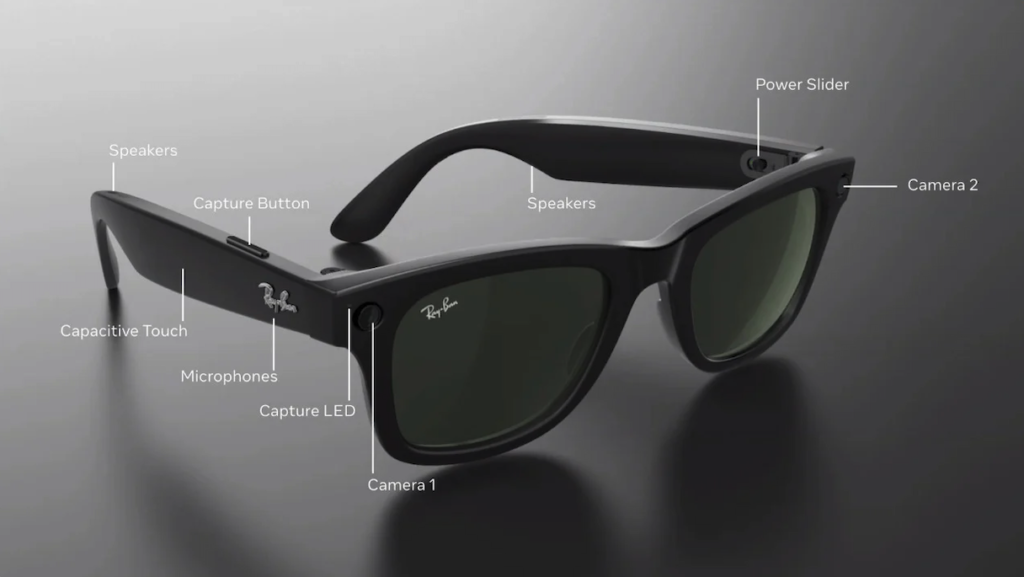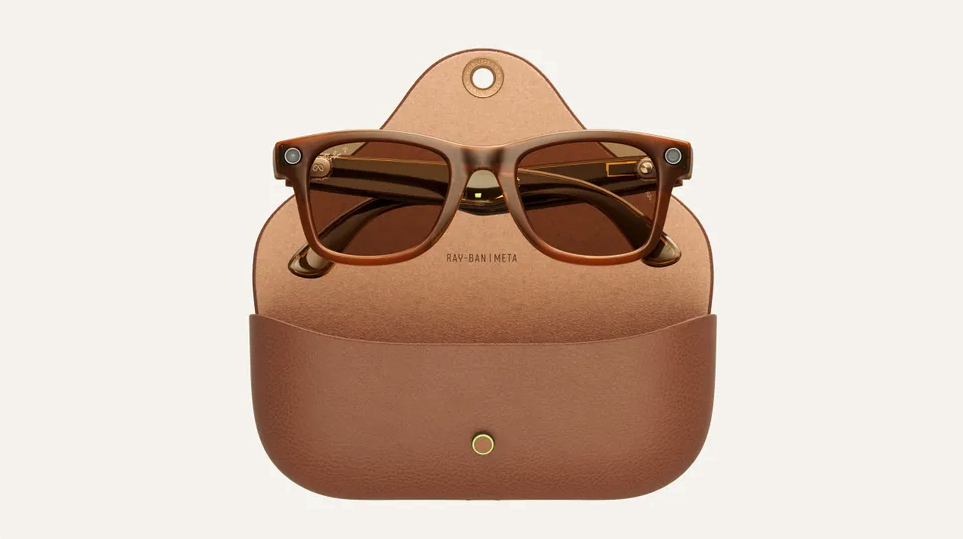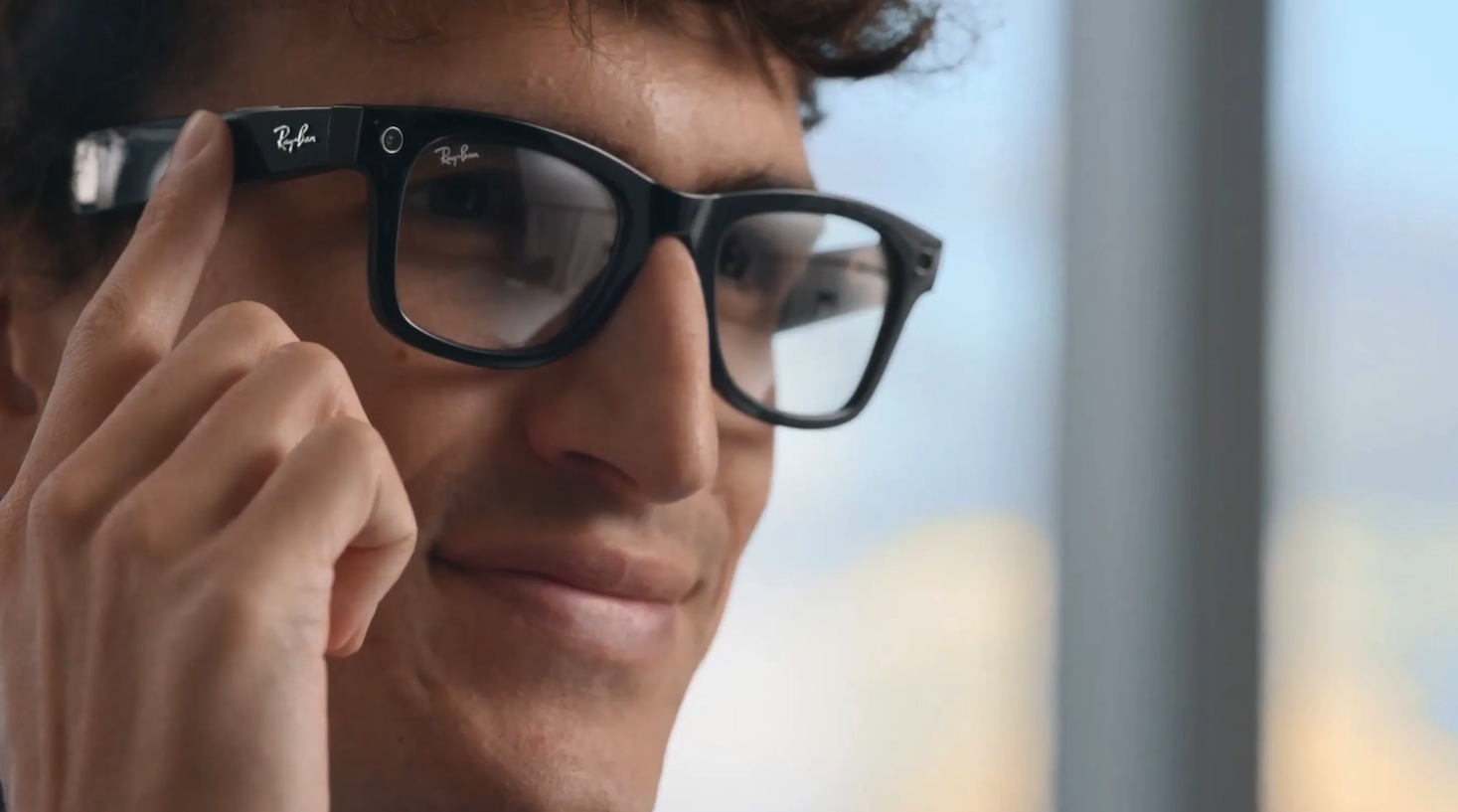Smart glasses, discreetly equipped with the ability to capture photos and videos, have been available for some time now. Enter the new Ray-Ban Meta Smart Glasses, recently unveiled at the Meta Connect event. While these glasses continue along a familiar path, there’s an air of freshness about them.
These smart glasses, the successors to 2021’s Ray-Ban Stories, are noteworthy for the fact that Meta has put its name on the product this time. One might assume that this signifies a significant innovation in the category. However, after getting hands-on experience with the glasses a few weeks ago, it’s evident that the appeal lies in the technology finally starting to make sense, both in terms of hardware and how it aligns with the era of TikTok, turning ordinary individuals into overnight influencers.

It comes as no surprise that the upgrade to 12-megapixel ultrawide cameras from the Ray-Ban Stories’ 5MP cameras makes a substantial difference. I had seen videos from my friends’ Stories before, and, with all due respect, their videos seemed as though they were filmed with subpar quality. To provide some context, the last iPhone equipped with a 5MP rear camera was the iPhone 4 in 2010, while the Ray-Ban Stories were released in 2021. The clips I recorded with the new glasses were in 1080p at 30 frames per second, resembling the quality one encounters daily on TikTok, YouTube, and Instagram Reels.
Needless to say, the 12MP camera also delivers better photo quality. The original Stories photos measured 2592 by 1984 pixels, while the new glasses boast an impressive 3024 by 4032 pixels. Although most photos may lose some detail when shared on social media or viewed on a phone, starting with a higher resolution typically results in higher-quality photos.
During the demonstration, I had the opportunity to view a few videos and photos taken with the Meta smart glasses. So far, everything appeared suitable for sharing, though perhaps not contest-worthy. Nonetheless, this emphasis on shareability is a significant update this time around.

For instance, Meta showcased a livestreaming demonstration on Instagram using the glasses. (They can also livestream to Facebook, but let’s be honest, who uses that?) It was intriguing to observe how the Instagram app immediately recognized the glasses and allowed switching between the phone’s selfie camera and the glasses. Although there were no actual viewers during the livestream, preventing me from testing the glasses’ ability to read and display the latest comments or reactions in real time, everything I attempted seemed to function seamlessly. Admittedly, this was a controlled demonstration, and the real-world performance remains to be seen.
Meta also informed me that it would be possible to share the photos taken via voice command, allowing users to select the destination (e.g., texts, Messenger, and WhatsApp). While I couldn’t witness this feature in action, if it proves to be effective, it would certainly enhance the device’s usability in the moment.
The rest of the updates appear to address concerns from the first-generation glasses. Notably, the capture LED, which alerts others that recording is in progress, has been slightly enlarged. It now flashes in a pulsating pattern, which Meta claims is less likely to be ignored compared to the static LED on the Stories. However, I’m less certain about this improvement. While the pattern was more noticeable in person, direct sunlight has the tendency to wash out any LED or screen. Until I can test them in everyday life, it’s challenging to determine whether this slight adjustment is sufficient to alleviate privacy concerns, especially given the discreet nature of the device. At least with a phone, it’s more obvious when someone is recording.

The glasses have a somewhat bulky appearance, but they feel lightweight when worn. The arms of the glasses also serve as touch control panels. It’s worth noting that these smart glasses offer a wider range of style options compared to others in the category, addressing a historical weakness. Due to the complexities of mass-producing gadgets, smart glasses have typically been available in “universal” options, primarily in black and occasionally in tortoiseshell if you’re fortunate. However, the new glasses come in a variety of colors, offer different lens options, and introduce a new rounded Headliner frame. Among the various color choices, I found the new blue option to be particularly appealing, with its subtle appearance and the added advantage of allowing users to see the components inside the arms.
The issue of audio leakage, a problem with the previous Stories model, appears to have been addressed with these new glasses. Meta claims to have made the glasses 50 percent louder while improving directional audio to focus sound toward the wearer’s ears. Even at high volume levels, you can still faintly hear external sounds, but it requires cranking up the volume considerably. Again, the real-world performance, especially in noisy environments like the subway, remains to be evaluated to determine the extent of the audio improvement.
One benefit of directional audio is the emergence of spatial audio, to some extent. I listened to a recording of Meta representatives circling around me while clapping, and I could indeed perceive the sound moving around me. It may be somewhat gimmicky, and the average audio call might not benefit from this feature, but the capability exists if you desire it.
In terms of battery life, the glasses come with a charging case that provides up to eight charges. The case itself is slimmer and includes an LED indicator to display the charge status.
Altogether, these glasses appear to hold promise for content creators, especially those specializing in point-of-view (POV) videos such as cooking, driving, and cat antics. This has been the proposed use case for previous models like Snap Spectacles and the original Ray-Ban Stories. What sets these apart is the potential for content influencers to genuinely consider using them beyond seeking ironic social media attention. However, their appeal to the average consumer remains to be seen. Many questions remain regarding the companion app, connectivity limitations, the IPX4 rating, and, of course, battery life. Nevertheless, these glasses seem like a promising addition to the tech market, which is perhaps why Meta has finally decided to put its name on the product.














